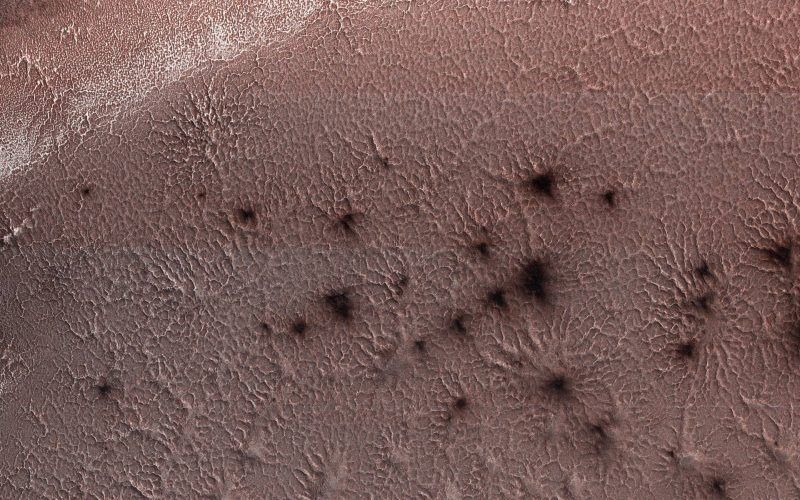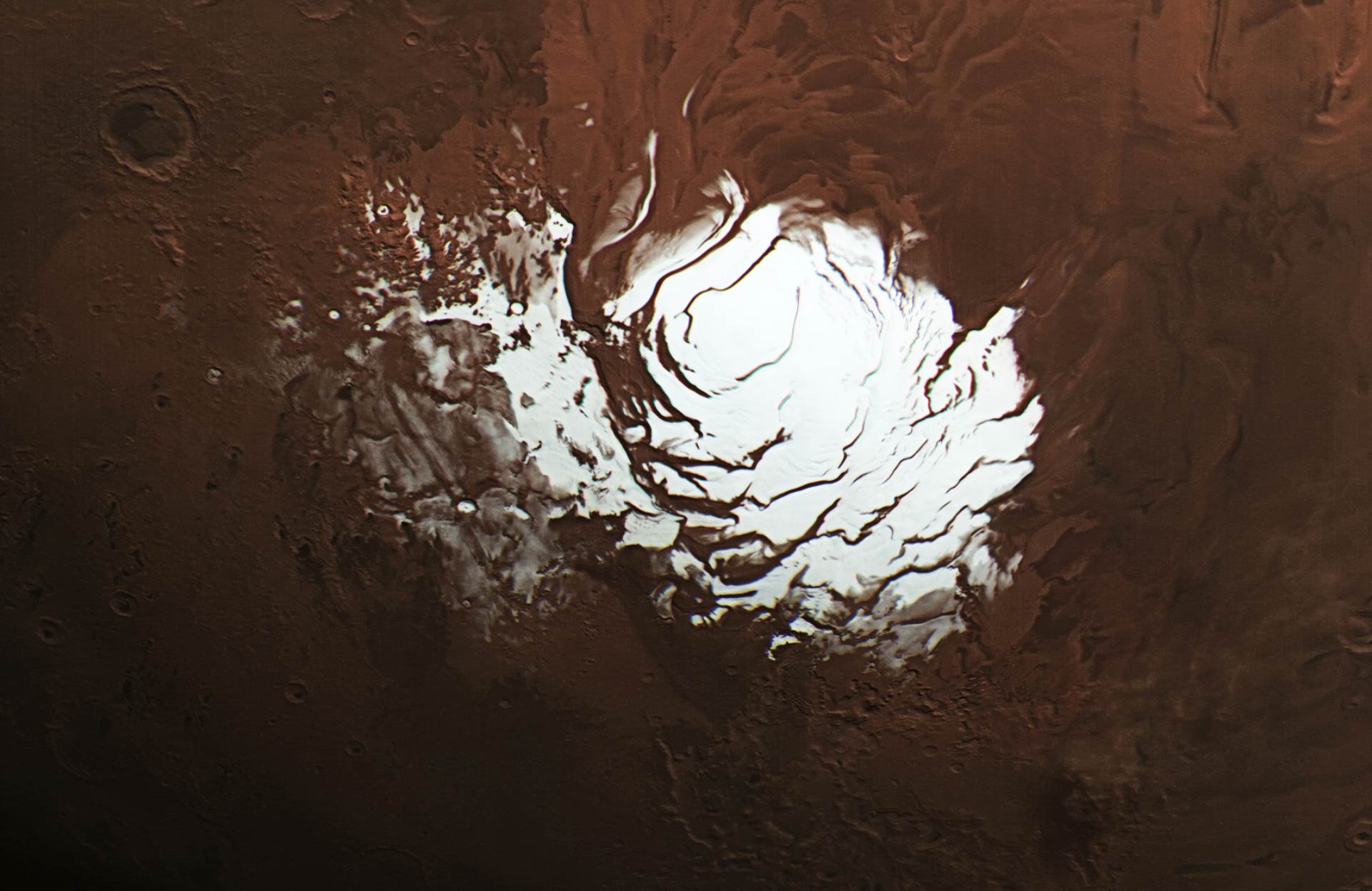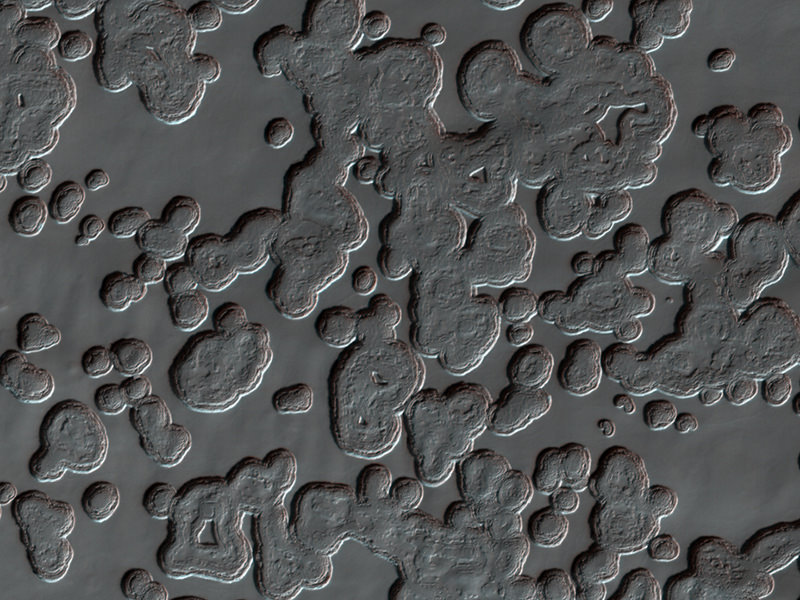A person suffering from arachnophobia might think their fear would stoked on a trip to Mars. However, there is such a thing known colloquially as a Martian “spider”. It is much more innocuous than the eight legged animal that strikes fear into the hearts of millions, but its origins have only been theorized until recently. Now, a team led by a group at Trinity College Dublin has determined that these “spiders” are actually topological troughs formed when dry ice directly sublimates to a gas.
Continue reading “Mars Spiders Form as Spring Arrives on Mars. But why?”New Study Says that Martian Weather May Get Snowy Overnight
For decades, scientists have tried to crack the mystery of Mars’ weather patterns. While the planet’s atmosphere is much thinner than our own – with less than 1% of the air pressure that exists on Earth at sea level – clouds have been seen periodically in the skies above the surface. In addition, periodic snowfalls has been spotted over the years, mainly in the form of carbon dioxide snow (i.e. dry ice).
However, according to a new study by a team of French and American astronomers, Mars experiences snowfalls in the form of water-ice particles. These snowfalls occur only at night, coinciding with drops in global temperature. The presence of these storms, and the speed at which they reach the surface, is forcing scientists to rethink Mars’ weather patterns.
The study, titled “Snow Precipitation on Mars Driven by Cloud-Induced Night-Time Convection“, recently appeared in the journal Nature Geosciences. Led by Aymeric Spiga, a tenured lecturer at the Université Pierre et Marie Curie and a researcher at Laboratoire de Météorologie Dynamique in Paris, the team conducted numerical simulations of Mars’ cloudy regions to demonstrate that localized convective snowstorms can occur there.
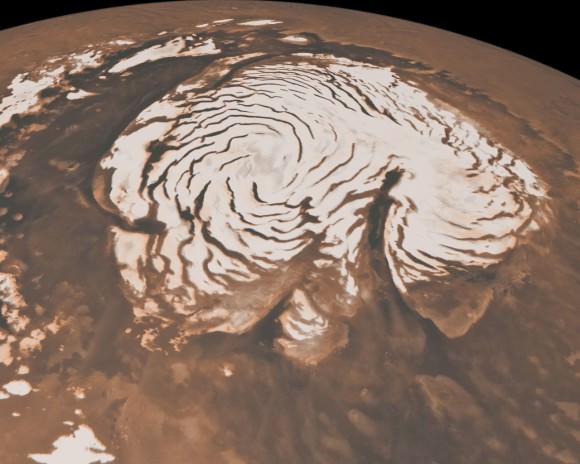
For decades, scientists believed that Mars experienced snowfall in the form of frozen carbon dioxide (aka. dry ice), particularly around the south pole. But it has only been in recent years that direct evidence has been obtained. For instance, on September 29th, 2008, the Phoenix lander took pictures of snow falling from clouds that were 4 km (2.5 mi) above its landing site near the Heimdal Crater.
In 2012, the Mars Reconnaissance Orbiter revealed additional evidence of carbon-dioxide snowfalls on Mars. And there has also been evidence in recent years of low-falling snows, which appear to have helped shape the Martian landscape. These include a relatively young gully fan system in the Promethei Terra region of Mars, which researchers at Brown University determined were shaped by melting snow.
Further, in 2014, data obtained by the ESA’s Mars Express probe showed how the Hellas Basin (a massive crater) was also weathered by melting snows. And in 2015, the Curiosity rover confirmed that the Gale Crater (where it landed in 2012) was once filled by a standing body of water. According to the science team’s findings, this ancient lake received runoff from snow melting on the crater’s northern rim.
All of these findings were rather perlexing to scientists, as Mars was thought to not have a dense enough atmosphere to support this level of condensation. To investigate these meteorological phenomena, Dr. Spiga and his colleagues combined data provided by various Martian lander and orbiter missions to create a new atmospheric model that simulated weather on Mars.
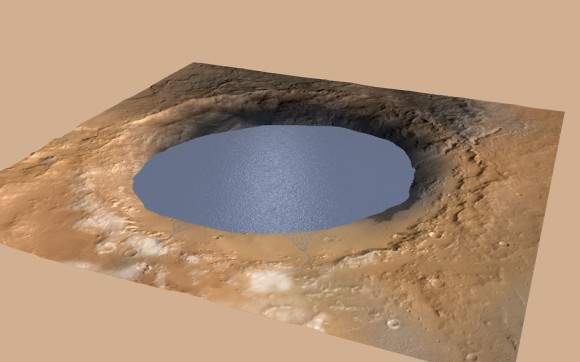
What they found was that during the nights when Mars’ atmosphere became cold enough, water-ice particles could form clouds. These clouds would become unstable and release water-ice precipitation, which fall rapidly to the surface. The team then compared these results to localized weather phenomena on Earth, where cold dense air results in rains or snow falling rapidly from clouds (aka. “microbursts”).
As they state in their study, this information was consistent with data provided by Martian lander and orbiter missions:
“In our simulations, convective snowstorms occur only during the Martian night, and result from atmospheric instability due to radiative cooling of water-ice cloud particles. This triggers strong convective plumes within and below clouds, with fast snow precipitation resulting from the vigorous descending currents.”
The results also contradicted the long-held belief that low-lying clouds would only deposit snow on the surface slowly and gently. This was believed to be the case based on the fact that Mars has a thin atmosphere, and therefore lacks violent winds. But as their simulations showed, water-ice particles that lead to microburst snowstorms would reach the ground within minutes, rather than hours.
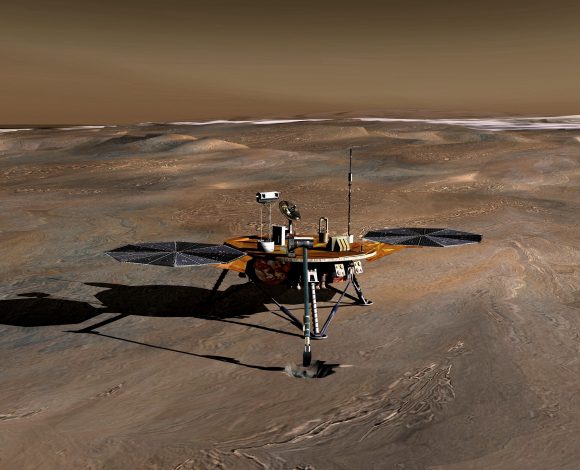
These findings indicate that Martian snowstorms also have a profound influence on the global transport of water vapor and seasonal variations of ice deposits. As they state further:
“Night-time convection in Martian water-ice clouds and the associated snow precipitation lead to transport of water both above and below the mixing layers, and thus would affect Mars’ water cycle past and present, especially under the high-obliquity conditions associated with a more intense water cycle.”
As Aymeric Spiga explained in an interview with the AFP, these snows are not quite what we are used to here on Earth. “It’s not as if you could make a snowman or ski,” he said. “Standing on the surface of Mars you wouldn’t see a thick blanket of snow—more like a generous layer of frost.” Nevertheless, these findings do point towards their being some similarities between the meteorlogical phenomena of Earth and Mars.
With crewed missions to Mars planned for the coming decades – particularly NASA’s “Journey to Mars“, scheduled for the 2030s – it helps to know precisely what kinds of meteorological phenomena our astronauts will encounter. While snowshoes or skis might be out of the question, astronauts could at least look forward to the possibility of seeing fresh snow when they wake up in their habitats!
Further Reading: AFP, Nature Geoscience
Giant Spiders on Mars!
Eek, spiders! All right, so it’s not actually little green arachnids we’re talking about here, but they are definitely spidery features. Called araneiform terrain, these clusters of radially-branching cracks in Mars’ south polar surface are the result of the progressing spring season, when warmer temperatures thaw subsurface CO2 ice.
As dry ice below the surface warms it can sublimate rapidly and burst through the frozen ground above, creating long cracks. If the material below is dark it can be carried upwards by the escaping gas, staining the surface.
Each dark splotch is around 100 meters wide.
This image was acquired by the HiRISE camera aboard NASA’s Mars Reconnaissance Orbiter on September 26, from a distance of 262 km (163.8 miles). See the full-size scan here, and check out more recent HiRISE images in the November PDS release here.
Credit: NASA/JPL/University of Arizona
Mars’ Underground Atmosphere
[/caption]
Scientists have spotted an underground reservoir near Mars’ south pole the size of Lake Superior… except that this lake is filled with frozen carbon dioxide – a.k.a. “dry ice”!
A recent report by scientists at the Southwest Research Institute in Boulder, CO reveals variations in Mars’ axial tilt can change how much carbon dioxide gets released into the atmosphere, affecting factors from the stability of water on its surface to the power and frequency of dust storms.
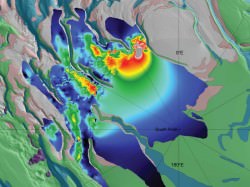
The Mars Reconnaissance Orbiter’s ground-penetrating Shallow Radar identified a subsurface deposit of frozen material, confirmed as carbon dioxide ice by its radar signature and visual correlation to the surface pitting seen above. As the polar surface warms during the Martian spring, underground CO2 deposits evaporate (or “sublime”) leaving behind round depressions in the frozen ground. (This has been aptly dubbed “swiss cheese terrain” by researchers on the HiRISE imaging team.)
While scientists were aware of seasonal CO2 ice layers atop the water ice this new discovery brings to light nearly 30 times more frozen CO2 than was previously believed to exist. In fact this particular deposit alone contains 80% the amount of CO2 currently present in the planet’s entire atmosphere.
The importance of this finding is how the carbon dioxide ultimately affects the global Martian climate as it freezes and thaws. When the CO2 is frozen and locked away in subsurface deposits like this, it’s not free to enter the atmosphere and do what CO2 does best: warm the planet… as well as increase atmospheric pressure. This means that liquid water cannot last as readily on the surface since it will either freeze or boil away. Also with less air pressure the strength of wind is decreased, so dust storms are less frequent and less severe.
When factored in with the axial tilt difference – and thus variations in the amount of sunlight hitting the poles – researchers’ models show that Mars’ average atmospheric pressure may at times be 75% higher than it is today.
These shifts in the orientation of the Red Planet’s axis occur on 100,000-year intervals… long by human standards but geologically very frequent. Mars may have had liquid water existing on its surface fairly recently!

Although this may sound that Mars has had its own share of global warming due to CO2 emissions in its history, it must be remembered that Mars and Earth have very different atmospheric compositions. Earth’s atmosphere is much thicker and denser than Mars’, so even when doubling its CO2 content Mars’ atmosphere is still too thin and dry to create a strong greenhouse effect… especially considering that the polar caps on Mars increase cooling more than additional CO2 in the atmosphere raises global temperature. Without oceans and atmosphere to collect and distribute heat, the effect of any warming quickly radiates out into space…and eventually the planet swings back into a freeze-dried state.
“Unlike Earth, which has a thick, moist atmosphere that produces a strong greenhouse effect, Mars’ atmosphere is too thin and dry to produce as strong a greenhouse effect as Earth’s, even when you double its carbon-dioxide content.”
– Robert Haberle, planetary scientist at NASA’s Ames Research Center
Read the full news release on the NASA Missions site.
Image credit: NASA / JPL / University of Arizona

